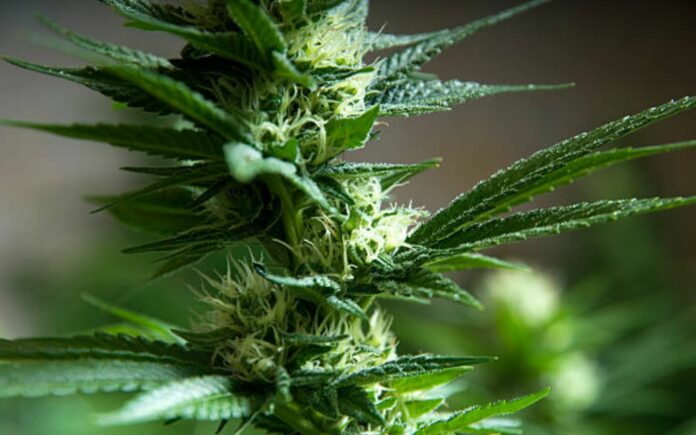Cannabidiol (CBD), the non-psychoactive component of cannabis, has been one of the most prominent health phenomena in recent years. It’s been praised for its wide range of therapeutic applications, from managing anxiety, depression, insomnia, and pain, to potentially alleviating symptoms of diseases like Alzheimer’s, multiple sclerosis, and even cancer.
Unlike tetrahydrocannabinol (THC), another cannabinoid present in the cannabis plant, CBD does not produce the ‘high’ or the psychoactive effects typically associated with THC. It’s this absence of psychoactive effects that often links CBD with reduced risks of psychiatric disorders like schizophrenia, rendering it a seemingly benign alternative to more contentious medications, such as opioids.
However, the feeling of being ‘high’ is now being recognized for its role in enhancing symptom relief in medical cannabis users, but it also comes with increased side effects.
In the current study titled “Understanding Feeling ‘High’ and Its Role in Medical Cannabis Patient Outcomes,” published in Frontiers in Pharmacology, a team from the University of New Mexico partnered with Releaf App™ to delve into this issue. They discovered that patients who reported feeling ‘high’ experienced a 7.7% surge in symptom relief and an uptick in reporting positive side effects like feelings of relaxation and peace.
It is imperative, though, to juxtapose these gains with an over 20% surge in the reporting of adverse reactions.
The study’s senior author and Associate Professor of Psychology, Jacob Vigil, elaborated on the significance of these findings. He pointed out that the sensation of feeling ‘high’ is not well-defined in scientific discourse, often being linked to impairment and euphoria. Conventionally, it is viewed as the objective of recreational use and considered a drawback to the medicinal use of cannabis.
These findings challenge “this assumption and find that feeling ‘high’ may be an unavoidable component of using cannabis medicinally.”
The research included nearly 2,000 patients who logged more than 16,000 medical cannabis administration instances utilizing cannabis flower. Findings revealed that almost half of the participants, precisely 49%, reported experiencing a high. This elevated sensation was strongly linked to various side effects. The most strongly associated positive side effects included feelings of being “chill” and “happy,” whereas the most frequently linked negative side effects were “dry mouth” and “red eyes.” The traditional understanding of feeling high generally denotes impairment and ecstasy, and these findings reaffirmed this – feeling high was statistically significantly linked to feelings of clumsiness, confusion, dizziness, haziness, and paranoia, as well as positive feelings such as happiness, gratitude, wellness, and optimism.
Even after adjusting for THC and CBD levels, dosage, method of use (pipe, joint, vaporizer), and initial symptom intensity, the research discovered robust positive connections between feeling high and higher symptom alleviation. This shows that being high could not only be a side effect to be avoided in professional settings, but rather a key part of using cannabis as treatment.
Getting high was most strongly linked to THC levels, while using a vape instead of burning the cannabis flower was linked to a smaller chance of getting high.
Work done in the past has shown that THC levels are also strong predictors of symptom relief. However, the results of this study show that once feeling high is taken into account, higher THC levels are no longer statistically significant predictors of symptom relief.
In other words, a high THC level only helps relieve symptoms more if the person is high.
However, even after taking into account whether a patient experienced a high, THC continues to be an independent predictor of adverse side effects.
According to the research, the findings were true for both male and female patients, patients with all degrees of prior cannabis use, and for symptoms including anxiety, sadness, pain, and fatigue. The correlation between feeling high and better symptom relief was reduced among patients over 40, indicating variation in the relationship among different users and uses. However, feeling high did not boost symptom relief among those who had insomnia.
“Cannabis products are extremely variable in their phytochemical composition and patients vary extensively beyond even factors included in this study, such as symptom type, gender, age, and cannabis experience,” added lead author Sarah Stith Stith.
“In addition, factors that increase symptom relief, such as feeling high and THC, are associated with increased negative side effects such as impairment. These complexities suggest that the future of cannabis-as-medicine lies in highly customized treatments rather than the conventional pharmaceutical model of standardized dosing for most patients.”
According to the authors, Clinicians should be aware that for many patients, getting high is probably a crucial element of a successful medical cannabis therapy. The use of substances for “recreational” purposes may have unanticipated health advantages since being high is linked to more symptom alleviation for a number of prevalent diseases.
The cannabis sector should be alerted about its noticeable pursuit of ever-increasing THC concentrations; beyond the point of a user experiencing a high, THC levels do not enhance symptom alleviation but do amplify adverse reactions and might trigger a rise in non-adherence to medication among medical users, according to the authors.
Upcoming studies should contemplate the correlation between the euphoric sensation and patient outcomes for a wider range of cannabis products, beyond just the flower. This could include highly concentrated forms and edibles that are commonly consumed by medical patients, as well as the impact of phytochemicals apart from THC and CBD.
Image Credit: Getty
